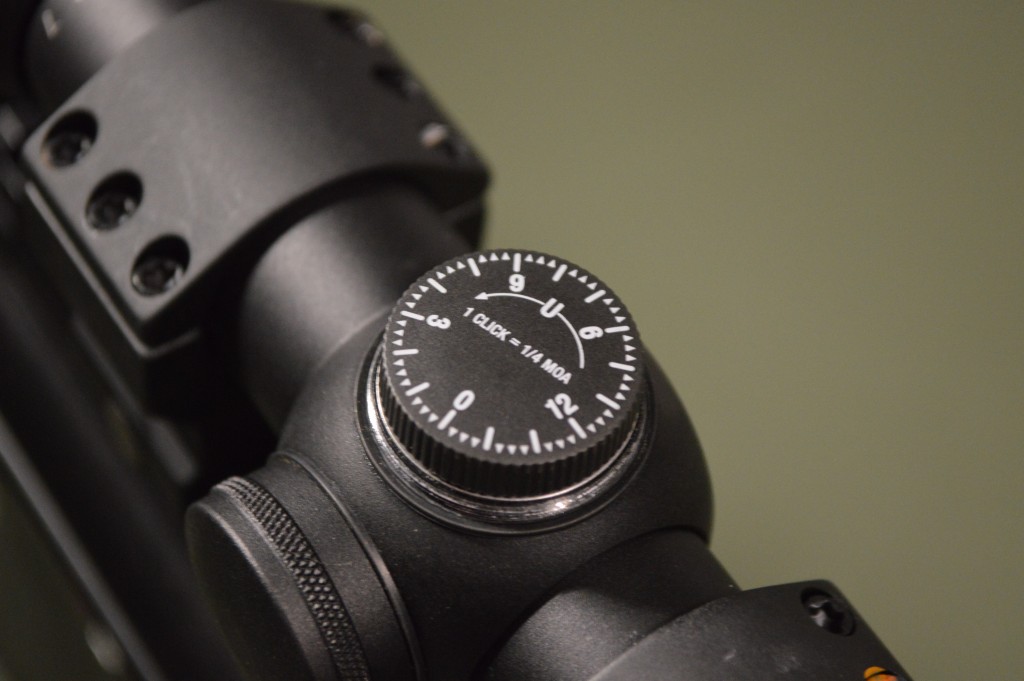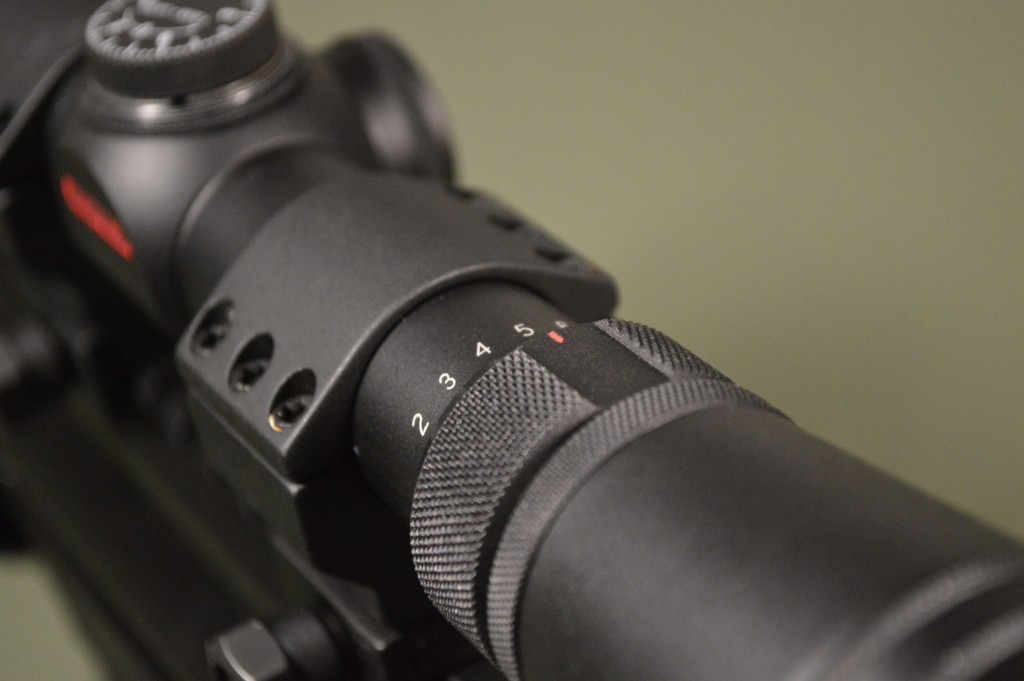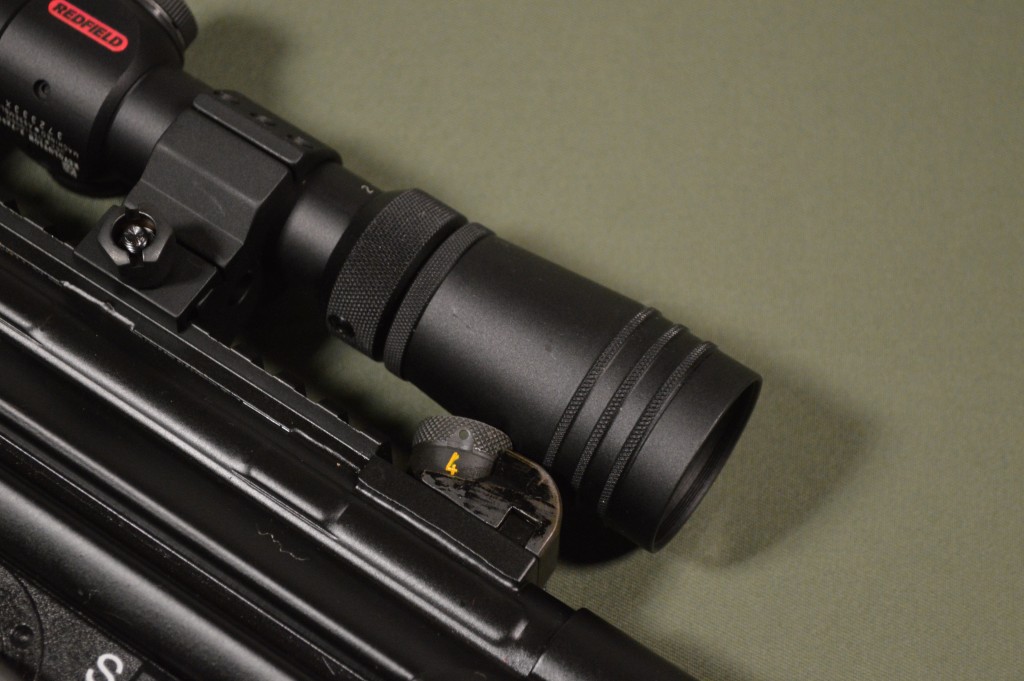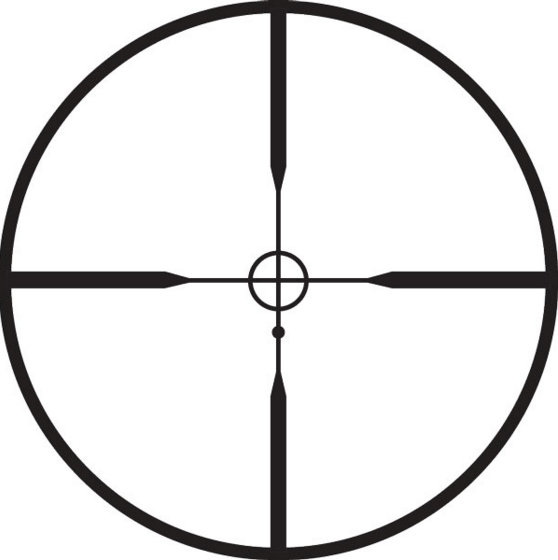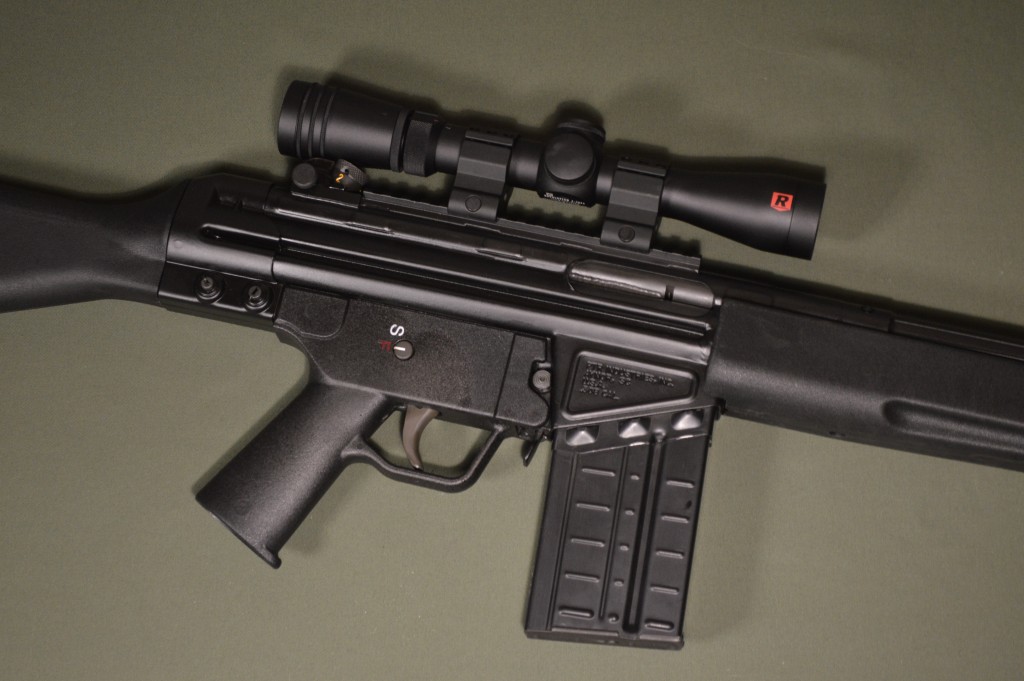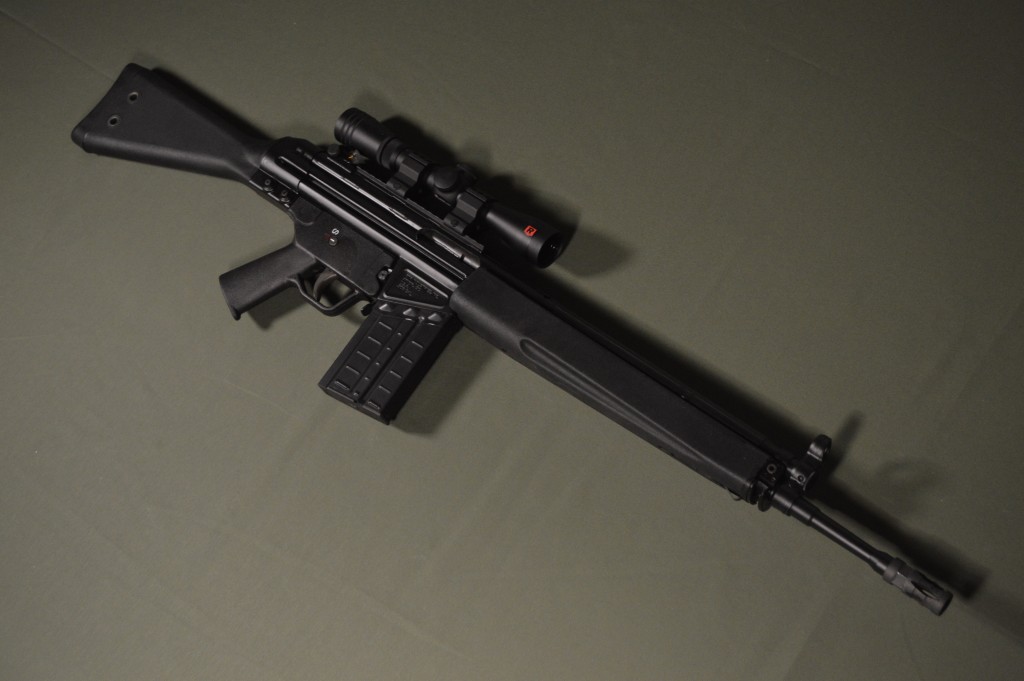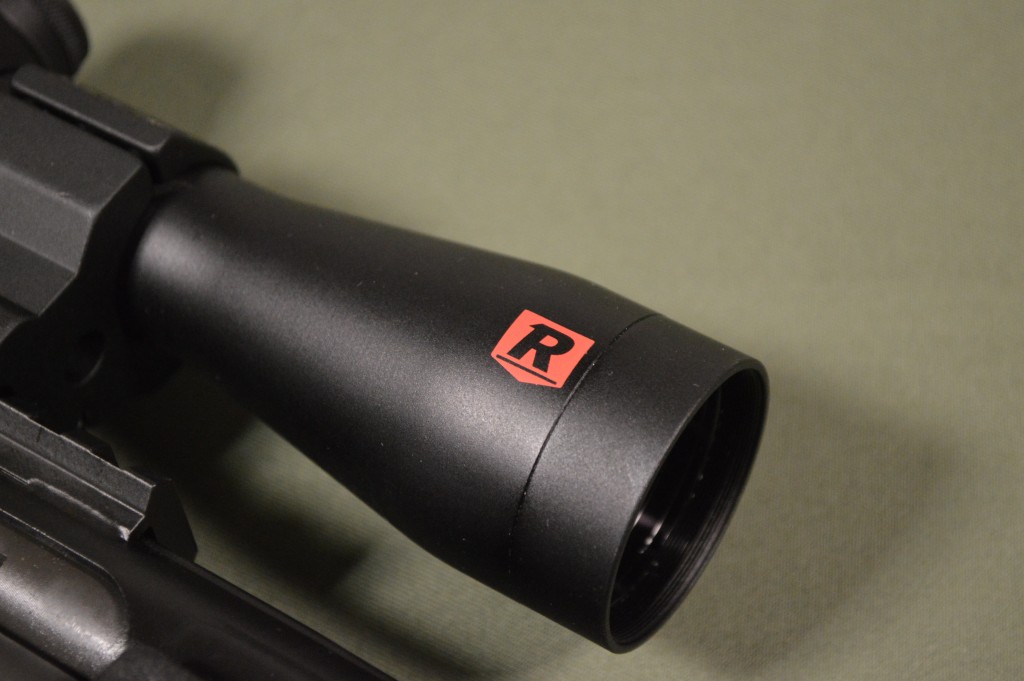Redfield Revolution 2-7x33mm Scope Review
Lately, I’ve been searching for a decent, low-priced optic to sit atop my relatively new PTR-91 A3R. As good as the HK-style iron sights are, a powerful .308 rifle like the PTR needs some sort of magnified riflescope to reach its full potential. After testing my 1-4x24mm Primary Arms scope on the gun, I found myself yearning for a slightly larger optic with more power and a much wider field of view (FOV). Since I’ve had good luck with Redfield scopes in the past, I decided to give their Revolution 2-7x33mm riflescope a chance.
Size & Weight
One of the most important factors I had to consider before selecting the Revolution was the scope’s overall length. Thanks to the forward charging handle of the PTR-91, scopes over around 11 1/2” long tend to get in the way while using the rifle. The 2-7x33mm Redfield optic sits at exactly 10 15/16” long and is really the perfect length for the PTR.
Since the Revolution is relatively short and features a smaller objective lens than many adjustable-power scopes, it also happens to be fairly light. I have mine mounted using Primary Arms high rings and the whole package weighs in at exactly 16 ounces. However, the Primary Arms rings are far from the lightest available and the optic itself weighs just 10.3 ounces. For a full-on rifle scope, that’s impressive.
Durability
Something to know about Redfield is that the company was purchased by Leupold approximately five years ago. Since the acquisition, Redfield has reemerged as a respected optics brand after several years of rather cheap offerings. The Revolution line is the company’s flagship series of scopes and each unit is assembled in Oregon.
The body of the Revolution is machined out of 6061-T6 aluminum and features a matte black anodized finish. 6061 aluminum is widely used for riflescopes, but it is not quite as durable as its 7075 brother. For a scope in this price range 6061 works well, but it isn’t bomb proof.
Redfield advertises the Revolution as being fully waterproof. I cannot say to what depth the scope is rated, but running the unit under a faucet for up to a minute had no ill effects on the optic. The sealed lenses and tube are accompanied by rubber-sealed adjustment turrets so the Revolution seems well equipped for reasonable field use and the sorts of soggy days you might encounter while hunting.
Adjustments
The Revolution’s elevation and windage adjustment knobs can be found underneath water resistant caps on the top and right of the scope’s tube. Each turret can be turned by hand (without tools) and the clicks are tactile, but not exactly audible. Compared to similarly priced scopes, this is one area where the Revolution is somewhat of a disappointment. Since I have optics with adjustments of 1/2, 1/3, and 1/4 MOA per click, I do appreciate that Redfield clearly marked the dials for 1/4 MOA of adjustment per click. To help mark zero, the knobs feature a ring at their bases with a small notch. This subtle touch is definitely helpful for those of us who use suppressors and want to keep track of point of impact shift.
Moving rearward, the Revolution’s magnification can be adjusted by turning a large knurled ring near the base of the rear lens bell. This ring rotates with reasonable effort and doesn’t feel overly heavy or so light that it might shift under recoil. Nominal power levels are laser etched into the scope body to help users find the desired setting.
Redfield has machined three knurled stripes into the ocular lens housing to assist shooters in turning the bell for focal adjustments. In order to focus the reticle, a small ring nestled just behind the magnification dial must first be turned counter clockwise. Once this is complete, the ocular lens housing can be rotated until the reticle has reached the desired clarity.
Glass Quality
Because I previously owned Redfield’s 4-12x42mm Revolution, I figured I knew what to expect from the 2-7x33mm version in terms of glass quality. That said, I honestly feel like the smaller scope is a better all-around optic. Most notably, the FOV offered by the 2-7x33mm Revolution is downright fantastic. At 100 yards, Redfield claims edge-to-edge FOV of 43 feet on the 2x (technically 2.5x) setting and 17 feet at 7x (technically 6.5x). Up until around 5x, the Revolution actually beats my Primary Arms Compact 4x Scope and the same can be said up to 4x when compared to my Trijicon ACOG TA11J.
While the Revolution’s FOV is excellent, its brightness is what I find most appealing. I hate to continue with the comparisons, but at comparable magnification settings the Revolution’s image is easily 10% brighter than both my Primary Arms Compact Scope and my Primary arms 1-4x24x scope. Even when pitted against my ACOG, the Redfield fares remarkably well (the Trijicon does sport a kill flash which hinders brightness somewhat). I’ve played with a handful of budget optics and I’ve honestly not found anything brighter than the Revolution series for less than $200.
As is true with any adjustable optic, the Revolution’s brightness and eye relief suffer at higher magnification levels. Redfield advertises 4.2” of eye relief at the lowest magnification setting and 3.7” at 7x. These numbers are correct according to my measurements, but the eye box is very small at 6x and above. The scope’s image brightness also drops off at around 6x, so I will likely leave it in the 4-5x range most of the time.
Something that seems to plague magnified optics, especially those on the affordable end of the spectrum, is an inability to adequately focus on targets inside of around 50 yards. While technically the Revolution is only parallax free past 150 yards, it is certainly usable at ranges much closer than that. Even at 25 yards, I have found it trivial to simultaneously focus on both the reticle and the target.
Reticle
This time around, I opted for Redfield’s standard 4-Plex. The company also offers what they call the Accu-Range reticle that features a generic bullet drop compensator roughly calibrated for a wide variety of rounds. I had the Accu-Range on my 4-12x version of the Revolution and found that it worked acceptably well, but since the system is intended to work with so many cartridges, it sacrifices quite a bit as far as precision is concerned. Moreover, the Accu-Range system is only calibrated to work at the highest magnification setting and it offers no provisions for range estimation.
For my purposes, the basic 4-Plex Revolution works very well. Its uncluttered sight picture forces my eye to focus on the center of the reticle. While the center crosshairs could afford to be a little finer, they are easy to acquire, especially considering the scope offers no illumination. If you’re primarily going to be shooting on a stationary range, the 4-Plex is more than acceptable for most situations.
Range Report
I said it before, but the Revolution’s wide FOV was one of the primary drivers behind my purchase. Though the FOV has more to do with the overall dimensions of the optic than its quality, there is no denying that being able to see more when looking through the scope is advantageous. At the range, I found it very easy to get on target quickly, thanks in large part to the Revolution’s FOV.
If the Revolution has any real weakness, it seems that the scope may exhibit some POA shift when cycling through the various magnification levels. I have yet to fully verify this issue, but while zeroing the optic I found that my POI appeared to wander as I tried different power levels. The degree of shift was not great, perhaps 1-1.5” at 100 yards, so I probably would not have noticed the inconsistency if I had only been shooting steel targets. I’ll be sure to update this article as I perform more testing.
According to Redfield/Leupold, the Revolution’s parallax is set for 150 yards. This means that at shorter distances, shooters might see some distortion and POI shift if consistent cheek weld is not maintained at all times. The degree of shift decreases with distance and never exceeds the diameter of the lens, but at ranges below 150 yards cheek weld is extremely important for repeatability’s sake.
Conclusion
As I mentioned in the opening, I’ve become quite a fan of Redfield’s Revolution series. Budget alternatives to their more expensive Leupold brothers, the Revolutions are quality optics in their own right. Redfield’s glass clarity and light transmission punch above the ticket price and the eye relief on the 2-7x33mm example I have is very forgiving (almost too forgiving on the PTR), especially at lower power settings. The scopes would benefit from more positive windage and elevation adjustments and I still need to determine if changing the magnification setting has any impact on point of aim, but my overall experience has been very good. At this point, I have no problem recommending the Redfield Revolution 2-7x33mm to those looking for an affordable, quality riflescope.
An information security professional by day and gun blogger by night, Nathan started his firearms journey at 16 years old as a collector of C&R rifles. These days, you’re likely to find him shooting something a bit more modern – and usually equipped with a suppressor – but his passion for firearms with military heritage has never waned. Over the last five years, Nathan has written about a variety of firearms topics, including Second Amendment politics and gun and gear reviews. When he isn’t shooting or writing, Nathan nerds out over computers, 3D printing, and Star Wars.




